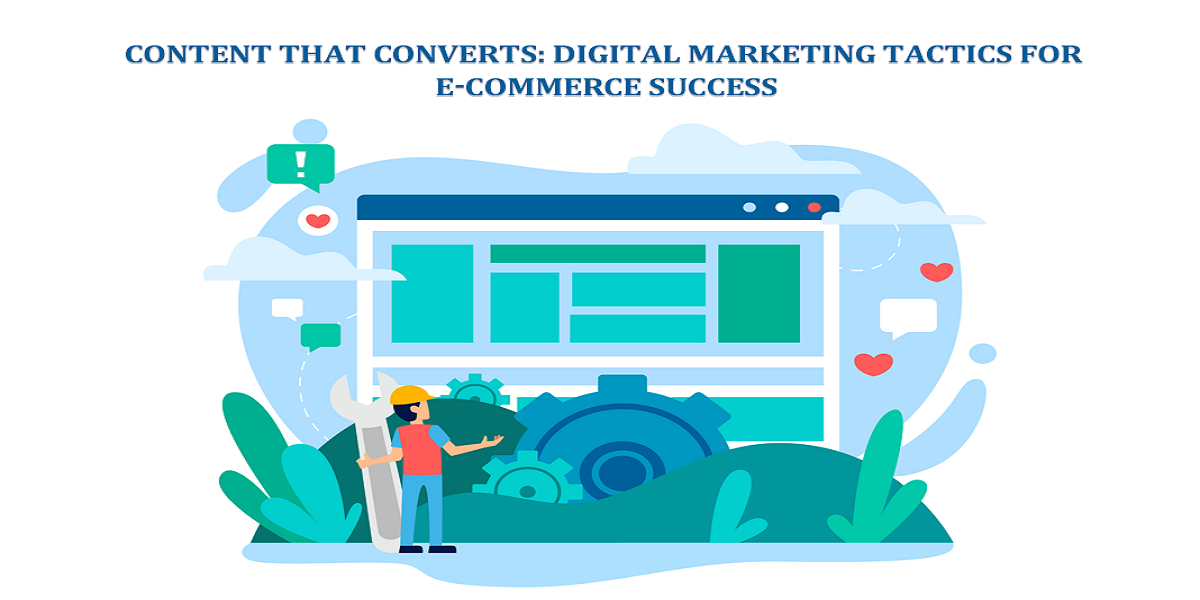
The Importance of Technical SEO to achieve SEO success
- By Jagdish Mali
- 26-12-2023
- SEO
Technical SEO is like giving your website a health checkup for search engines. Its primary goal is to ensure that your site is easily comprehensible and navigable for search engines. To draw an analogy, envision your website as a book – technical SEO functions as the meticulous organizer, ensuring the book is well-structured with clear chapters. This way, readers (or search engines) can effortlessly locate the information they seek.
This process entails activities such as checking for broken links, optimizing site loading speed, and organizing information in a logical manner. When your website is technically sound, search engines can traverse it seamlessly, increasing the likelihood of it appearing prominently in search results. In essence, technical SEO transforms your website into a welcoming and accessible space, catering to both users and search engines alike.
Elements of Technical SEO
Technical SEO might sound complex, but it's like the backbone of your website, ensuring it's healthy and easy for search engines to understand. Imagine you're building a house. You want it to be strong, organized, and welcoming. Technical SEO does the same for your website.
Crawlability
Imagine a robot reading your website. Crawlability is about making it easy for this robot to explore every corner. Fix broken links; it's like repairing a broken bridge on our robot's path.
Keep things tidy. Organize your website so the robot can follow a logical map. It's like making clear signposts for our robot friend.
Manage redirects effectively. Redirects are like guiding our robot around detours. Do it right to avoid confusion.
Performance
How fast does your website load? Think of it like a race – users don't want a slow runner. Optimize your website's speed; it's like giving your site faster shoes.
Streamline code – this is like removing unnecessary items from your backpack to make it lighter. It helps your site run smoother and faster.
Make your website friendly for mobiles. It's like ensuring everyone, whether on a computer or a phone, gets a comfy seat at your website's party.
Indexation
Think of your website as a library. Indexation is like organizing books so the librarian (search engine) knows where everything is.
Create a sitemap. It's like making a book index, helping the librarian find every section of your library.
Avoid duplicate content. It's like having the same book in different sections; it confuses the librarian. Take help from Technical SEO Consultants in case you face an issue with indexation.
Why Technical SEO is Important?
Let's explore the 10 key reasons why Technical SEO is crucial for your website's success.
1. Search Engine Visibility
Search Engine Visibility stands as the cornerstone of online success, representing the prominence of your website in search engine results, particularly on platforms like Google. Technical SEO assumes a pivotal role in elevating search engine visibility by optimizing various elements, including website structure, content, and performance.
When your website is easily crawled, indexed, and comprehensible to search engines, it stands a higher chance of featuring prominently in relevant search results. This visibility proves crucial for attracting organic traffic, as users typically click on results displayed on the first page of search engine listings. In essence, search engine visibility functions as a digital billboard, showcasing your website to users actively seeking information, products, or services aligned with your content or offerings.
2. User Experience Enhancement
User Experience Enhancement, facilitated by Technical SEO, transforms your website into a user-friendly haven. It encompasses optimizing design, navigation, and overall usability to ensure visitors have a positive interaction. Technical SEO practices, such as improving page speed, mobile responsiveness, and fixing broken links, contribute to a seamless user experience.
A website that loads quickly and is easy to navigate reduces bounce rates, encouraging visitors to explore more pages. When users find what they need effortlessly, they are more likely to stay longer, engage with your content, and potentially convert into customers. User experience is not just about aesthetics; it's about creating a digital environment that is both inviting and efficient, fostering user satisfaction and loyalty. In essence, Technical SEO transforms your website into a welcoming destination where users enjoy their online journey.
3. Page Load Speed for Better Rankings
Page Load Speed is a critical factor in Technical SEO that significantly influences your website's rankings. It refers to how quickly your web pages load when users access them. Search engines, particularly Google, consider page speed as a ranking factor because they aim to deliver the best user experience.
A faster-loading website not only satisfies users but also signals to search engines that your site is efficient and user-friendly. Slow-loading pages can lead to higher bounce rates, impacting rankings negatively. By optimizing elements such as image sizes, leveraging browser caching, and streamlining code, Technical SEO enhances page load speed, contributing to improved search engine rankings. In the competitive online landscape, faster-loading pages not only attract and retain users but also elevate your website's visibility in search results.
4. Mobile-Friendly Design
Technical SEO practices involve responsive design, ensuring that your site adjusts seamlessly to different screen sizes. Google prioritizes mobile-friendly websites in mobile search results, emphasizing their importance.
A mobile-friendly design enhances user experience by offering easy navigation, readable content, and intuitive interactions on smaller screens. This not only satisfies visitors but also positively impacts search engine rankings. In today's digital landscape, a mobile-friendly website is not just a perk; it's a necessity for reaching and engaging a broader audience.
5. Elimination of Technical Issues
The Elimination of Technical Issues through Technical SEO is akin to conducting a thorough website health check. It involves identifying and resolving issues that could hinder the performance of your site. Technical SEO addresses concerns such as broken links, duplicate content, and server errors, ensuring a smooth online experience for both users and search engines.
By fixing these technical glitches, your website becomes more reliable, user-friendly, and appealing to search engines. Users are less likely to encounter frustrating errors, leading to increased trust and engagement. From a search engine perspective, a technically sound site is more likely to be crawled, indexed, and ranked favorably. This emphasis on eliminating technical hurdles is crucial for maintaining a healthy and high-performing online presence.
6. Enhanced Security and Trust
Enhanced Security and Trust, integral to Technical SEO, create a secure digital environment for both users and search engines. Technical SEO practices include implementing security measures such as using HTTPS and maintaining a valid SSL certificate. This ensures that data transmission between users and your website is encrypted and secure. A secure website builds trust with visitors, assuring them that their information is safe from potential threats.
Search engines, recognizing the importance of user safety, often favor secure websites in rankings. Just as users wouldn't trust a store with a shaky lock, a website with enhanced security becomes a trustworthy online destination. In the digital landscape, where privacy concerns are paramount, prioritizing security through Technical SEO establishes a foundation of trust with your audience.
7. Structured Data for Rich Snippets
Structured Data, a key element of Technical SEO, is like adding a layer of richness to your website's presence in search engine results. By incorporating structured data markup, such as Schema.org, you provide explicit information about your content to search engines. This enables search engines to create Rich Snippets, enhancing the appearance of your listings with additional details like ratings, prices, and event information.
Rich Snippets not only make your results stand out but also provide users with quick, informative previews, potentially increasing click-through rates. Through Technical SEO practices like structured data implementation, your website communicates more effectively with search engines, contributing to a visually appealing and informative representation in search results. This not only improves the user experience but can also positively impact the clickability of your content.
8. Efficient Crawling and Indexing
Efficient Crawling and Indexing, central to Technical SEO, ensure that search engines navigate and understand your website's content with ease. Technical SEO practices focus on optimizing your site's structure, sitemaps, and robots.txt file to facilitate efficient crawling. When search engine bots can quickly and comprehensively explore your website, it enhances the likelihood of all your important pages being indexed.
This, in turn, positively influences how your site appears in search results. Imagine your website as a well-organized library, with clear labels and a logical arrangement – efficient crawling and indexing ensure that the librarian (search engine) can effortlessly locate and catalog every valuable book (web page) in your collection. This process is fundamental for maximizing your website's visibility and accessibility in the vast digital library of the internet.
9. User-Friendly URL Structure
A User-Friendly URL Structure, a component of Technical SEO, is like crafting a clear roadmap for both users and search engines to navigate your website. Technical SEO ensures that your URLs are concise, descriptive, and easily understandable.
Imagine your website's URLs as signposts in a city – clear, well-labeled signs make it easy for both residents (users) and visitors (search engines) to find their way around. This simplicity contributes to improved navigation, user satisfaction, and, ultimately, enhanced search engine rankings.
10. Adherence to Search Engine Best Practices
Adherence to Search Engine Best Practices, a fundamental aspect of Technical SEO, is akin to following the rules of a game to ensure long-term success. This involves optimizing content, ensuring mobile responsiveness, and implementing security measures.
Just as a team following the rules gains favor with referees, a website following search engine best practices gains favor with search algorithms. This adherence helps maintain a positive relationship with search engines, reducing the risk of penalties and algorithmic setbacks, and contributing to sustained online visibility and success.
How to Do a Technical SEO Checkup
Imagine you're the doctor for your website, making sure it's in the best shape for visitors and search engines.
Crawling Analysis:
Use tools like Screaming Frog or Ahrefs – these are like your X-ray machines, scanning your website for any issues. Look for broken links – these are like fractures in your website's bones. Fix them to keep everything strong.
Crawling and Indexing Assessment:
Go to Google Search Console – it's like checking your website's vital signs. Ensure search engines are crawling and indexing correctly. Check for crawl errors – these are like warning signs that something might be wrong. Fix them to keep your website healthy.
Site Speed Evaluation:
Use tools like PageSpeed Insights – this is like checking your website's heartbeat. Make sure it beats fast enough for users. Identify areas to improve – it's like finding exercises to make your website faster and healthier.
Mobile-Friendliness Check:
Use Google's Mobile-Friendly Test – this is like checking if your website fits well in different-sized shoes. Ensure it's comfortable for mobile users. Make adjustments – it's like tailoring your website's outfit to fit all devices.
Duplicate Content Examination:
Use tools like Siteliner – this is like finding and removing identical paragraphs in your book. Remove duplicate content for better search results.
Site Structure and Internal Linking Review:
Review your site's organization – it's like making sure all the rooms in your house are easy to find. Ensure users and search engines can navigate easily. Check how pages are linked – it's like having a good road system between rooms. Make sure paths are clear.
Structured Data and Rich Snippets Inspection:
Use Google's Structured Data Testing Tool – this is like adding special notes to your book so the librarian understands it better. Ensure correct use of structured data – it's like making your book stand out on the shelf, catching readers' eyes.
Website Security Check:
Check for HTTPS and SSL – it's like locking your house to keep it safe. Ensure your website is secure for both users and search engines. Follow security best practices – it's like having a security system for your website, protecting it from online intruders.
Meta Tag Assessment:
Confirm unique and descriptive title tags – it's like giving each chapter in your book a clear title. Help search engines understand your content. Ensure proper meta descriptions – it's like writing enticing summaries for each chapter. Encourage users to click on your pages.
Conclusion
After your website receives a clean bill of health from this checkup, it becomes more inviting to visitors, much like a well-kept, organized house that welcomes guests. While technical SEO may appear extensive, its essence lies in maintaining your website's fitness, speed, and user-friendliness – ensuring it remains a top choice for both users and search engines.
Considered the backbone of a successful online presence, technical SEO goes beyond mere visibility to search engines. It also contributes to providing a seamless and enjoyable experience for your visitors. Analogous to a well-maintained store in a bustling marketplace, a technically optimized website stands out, attracts more visitors, and ultimately paves the way for business success.
Recent blog

How NASA Uses Web Design to Optimize User Experience in Space Control
Web Design | 03-05-2024
Content that Converts: Digital Marketing Tactics for E-Commerce Success
E-commerce | 02-05-2024.png)




